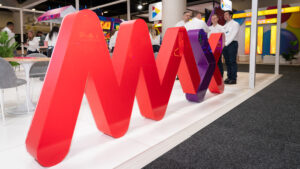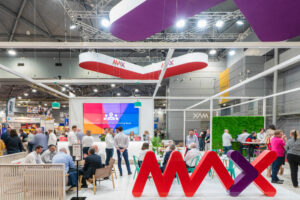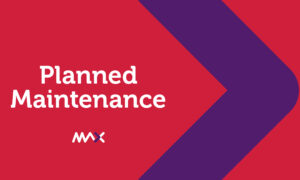The events of 2020 and 2021 inspired an array of innovative dining options, with regulations across Australia leading to changes in the way customers dine out.
While New South Wales and Queensland have long embraced the joys of alfresco dining, Victoria and its state capital Melbourne have traditionally been at the mercy of the infamous four seasons in one day and largely opted to eat indoors.
COVID changed all that, with state and local governments swiftly bringing in measures aimed at helping clubs, restaurants and other hospitality venues to operate safely, which for many has meant increasing the options for outdoor dining.
While the rules and advice have changed radically since venues first reopened and continue to be subject to change, depending on active cases, many venues made significant alterations to their layouts early on and are looking to stick with them.
Along with implementing QR registration systems, supplying hand sanitiser, venues also took measures to ensure that physical distancing is possible. There are several ways of doing this and around the globe some of them have been most inventive, such as an Austrian bar filling alternate seats with mannequins, glass or Perspex partitions on tables in Spain or plastic screens in Bangkok.
But with the science showing that outdoor is generally a safer place to be, this has become the most popular solution.
In Victoria, the State Government changed planning and permit requirements, helping local councils to fast-track applicants and approvals for venues looking to activate outdoor areas. The Industry Support and Recovery Minister, Martin Pakula, announced that the new focus would “utterly transform the city, and not just for this summer”, with Premier Daniel Andrews adding that the intention was for the emphasis on outdoor dining to become a ‘lasting feature’ in the Victorian hospitality industry. Whether this will be true in the long term remains to be seen.
Accordingly, a number of grants were made available, including:
• $5000 for hospitality businesses outside of the Melbourne CBD for those with a payroll under $3 million, to cover commercial umbrellas, furniture and Perspex safety screens
• $40 million across the City of Melbourne for streetscape improvements to facilitate outdoor dining and entertainment, and
• $30 million in grants for businesses to buy equipment and convert spaces for the outdoor culture.
Safer Solutions
With venues newly able to repurpose car parks, gardens, pavements and even kerbside parking spaces on adjacent roads, in late 2020 and early 2021 there was a flurry of activity from hospitality venues looking to adapt their offering and welcome customers back safely. This may change, however, with recent reports revealing that the loss of parking revenue local councils are experiencing – as spots are given over to hospitality venues’ outside dining options –
could see them reverse their endorsement of the initiative in the medium term.
Currently though, with an eye to ‘COVIDnormal’, the biggest influences on how venues have chosen to respond are available space and funds. The options range from simple bollards surrounding tables and seating, to fully customisable pods incorporating heating and cooling, and designed to withstand inclement weather.
At the modest end of the spectrum are venues like the Mount Erica Hotel in the inner Melbourne suburb of Prahran. Sacrificing its car park, the pub has installed a slightly raised wooden floor with railing and planter beds, and given each of the tables a sun umbrella for protection.
Taking it up to the next level are venues such as Lover in nearby Windsor. Commandeering part of the side street adjacent to the building, the cafe has installed bollards around its table and seating configuration and then added a demountable marquee to provide a little more protection from the elements.
At the top of the range are venues like The Railway Club Hotel in Port Melbourne, Entrecote, the RACV Club and Mirvac’s Riverside Quay, which all installed dining pods courtesy of local modular infrastructure supplier Spacecube. The company’s CEO Mark Davies says adapting its usual product was seamless. “Spacecube has a history of creating high-end semi-permanent structures, so it was a natural path,” he explains.
“New York City is an interesting example where local governments are taking the view that outdoor dining has enhanced the local offering and improved liveability and the community,” Mark Davies, CEO Spacecube
The company developed four different outdoor dining options, which include rollout awnings, integrated LED downlights, white plywood ceilings and premium floors. With the majority of the fitout and custom elements completed in the warehouse prior to installation, it usually only takes a day (or overnight in a busy street) to construct the dining pods.
Davies says demand was extremely strong as lockdowns eased. “The first week or two we were inundated with calls and emails,” he says, though this naturally tapered off as some venues weren’t able to secure the correct council approvals or their locations weren’t appropriate.
With pods including the fitouts and configurations starting at around $15,000, most venues have hired the pods, but some with greater financial resources have opted to buy, and not just because they think the restrictions are here to stay, reveals Davies. “They could see the benefit in using the structure for a second or third life, if the outdoor dining as we are currently experiencing is mandated to reduce.”
The inspiration comes from overseas. “New York City is an interesting example where local governments are taking the view that outdoor dining has enhanced the local offering and improved liveability and the community,” says Davies. “This may see a more permanent view taken and, if this occurs, we expect a much higher demand if those decisions are made.”
This article was first published in State of Play, Issue 8, 2021




